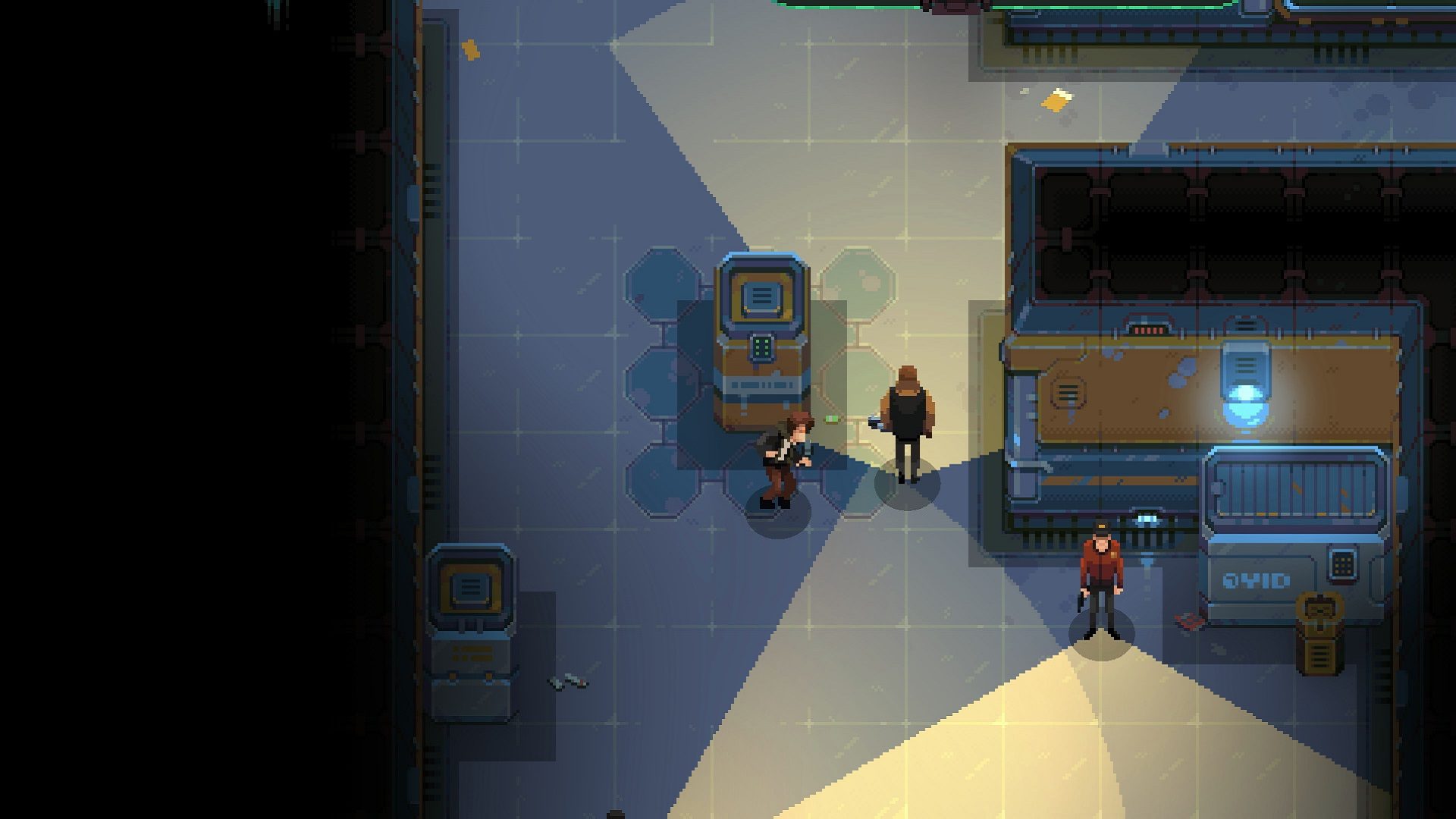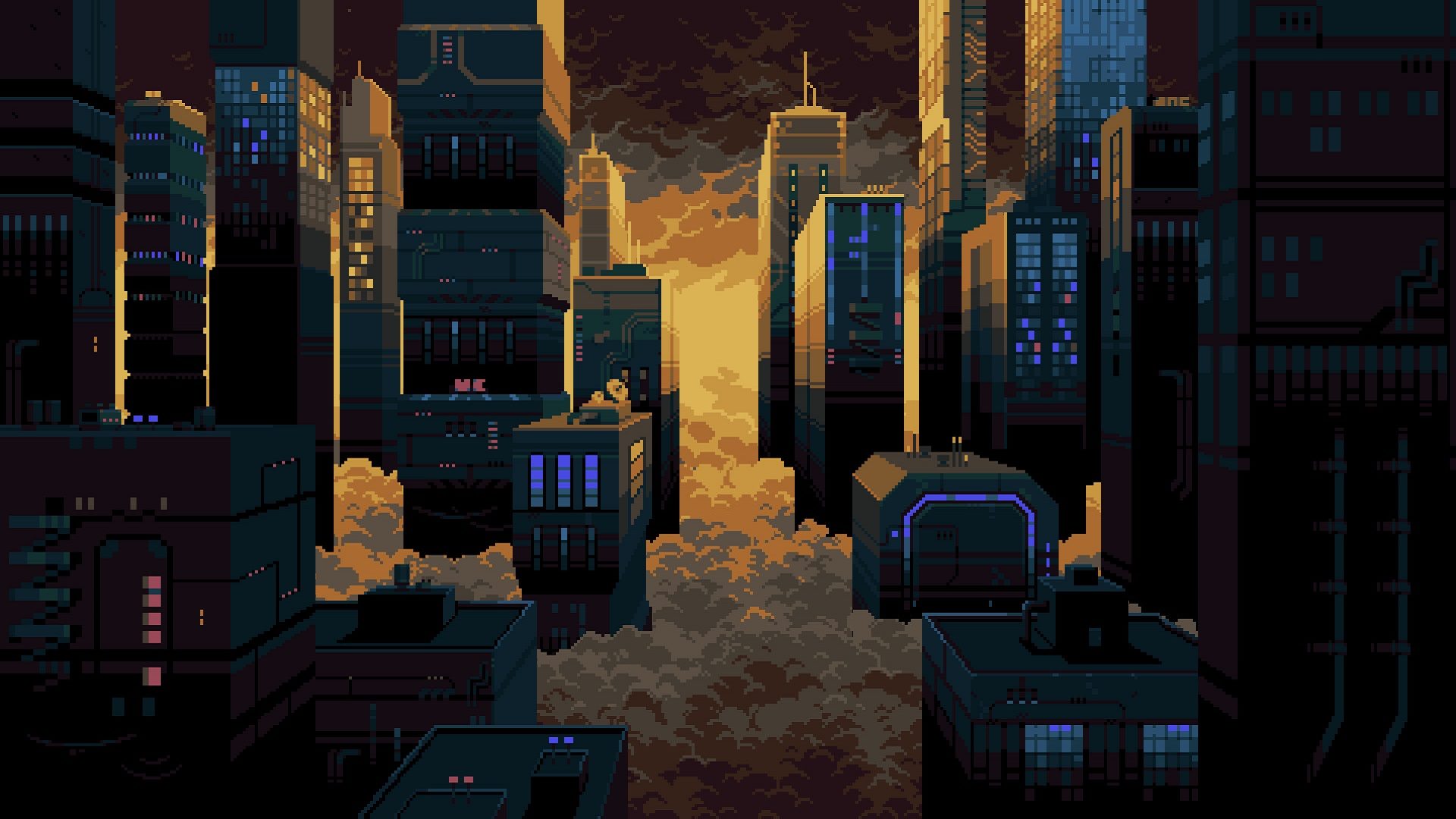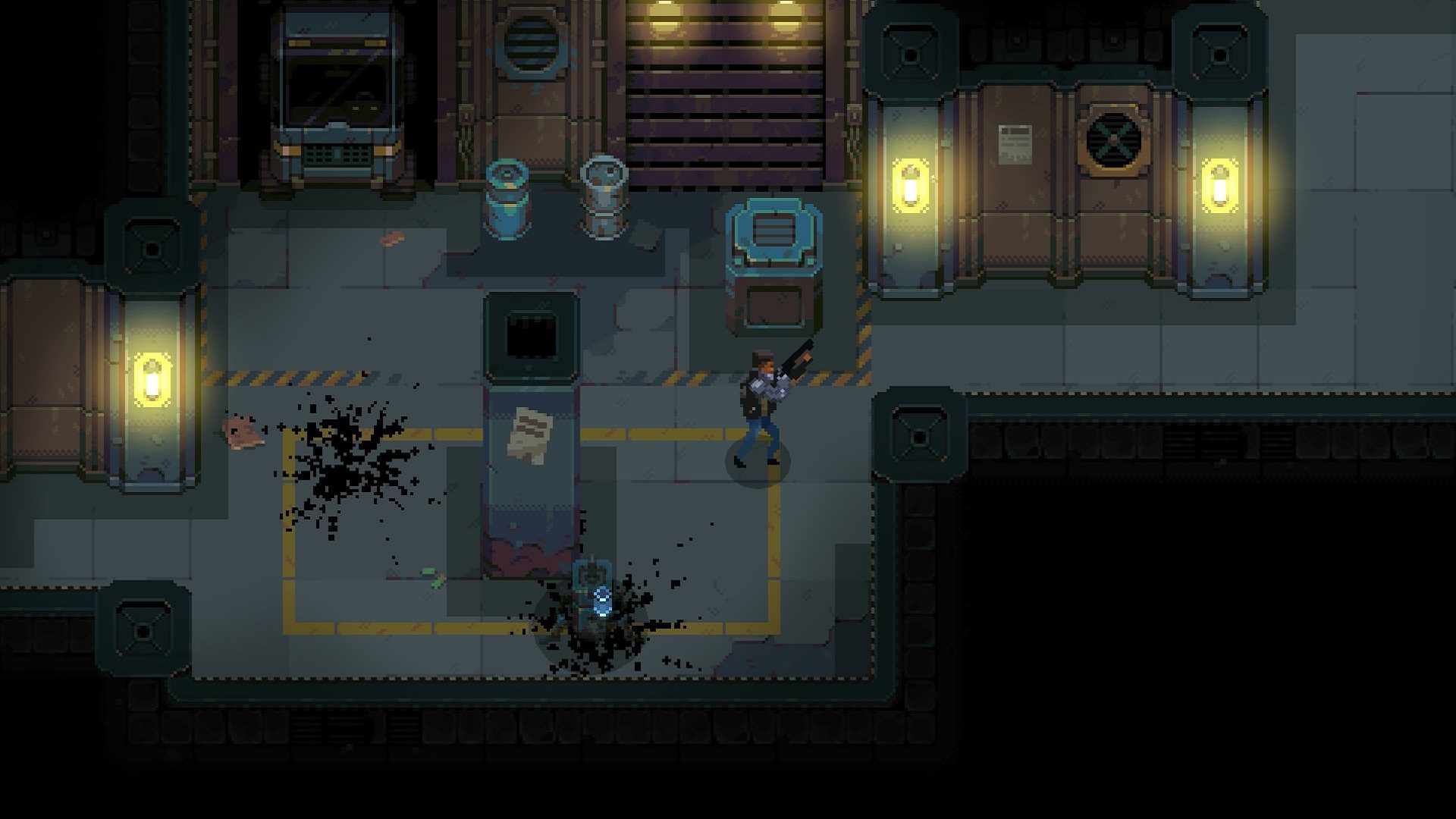This might be a controversial statement, but I think stealth games are way better when it’s absolutely clear at all times when you’re hidden and when you’re not. I don’t want to have to guess when an enemy is seeing me or suspicious of me. I don’t care if it’s “realistic” or not. I want my stealth to be a binary—now you see me, now you don’t.
Here’s a more concrete example: As much as I love Metal Gear Solid 3: Snake Eater, its approach to a percentage-based stealth system with camouflage was a huge downgrade from its predecessors’ radar-based mechanics. “I liked the vision cones,” I grumble as I place my dentures in a glass of water.
So when I say that Disjunction is basically “Metal Gear Solid’s Radar: The Game,” just know that I mean it as high praise.

Disjunction takes place in New York just a couple of decades in the future, in a post-economic-collapse world where cybernetic enhancements are all the rage and a private military corporation is trying to win a contract with the police to uphold the law in an era of massive civil unrest. A popular community leader is framed for a crime he didn’t commit, which leads three different playable characters to unravel a massive conspiracy at the highest level.
If it sounds like developer Ape Tribe Games has just thrown a bunch of tropes from several different genres into a pot and stirred, then you get what Disjunction is. Anyone even slightly familiar with cyberpunk, dystopian, and noir narratives will predict every step of the story. The private military company is evil, sure. A man seeking to discover the truth about his child’s death is operating on the edge, yes. The prodigal daughter who turned her back on her family’s gangster ways is dragged back into the fray, check. We’ve seen this all before.
As a stage setting for Disjunction’s stealth-based gameplay, it’s perfectly fine, and it might be unfair to judge the story’s intentions too loftily. I don’t think the developer even cared if it transcended genre conventions or not. Maybe the story was just an excuse. But, as a general rule, I also think that being bombarded by obviousness and clichés for seven hours straight can blunt the impressions that the more effective aspects of a game can leave.

Where Disjunction is most effective is how it rewinds the evolution of stealth gameplay to its most obvious and readable form. Like I said, it takes the vision cones of Metal Gear Solid’s radar and places them squarely on the map that your characters navigate. You always know where you can stand and where you can’t. There’s no ambiguity around, say, the enemy’s peripheral vision or whether they can see you behind that box in the middle of the room. And even when you step inside that vision cone, a meter above the enemy’s head gradually fills up so you know exactly how long you have to retreat.
That might sound simplistic, and it is. That’s the beauty of it! One of the things that’s most annoying about a lot of stealth games is that they’re supposed to sell the fantasy that you can be a highly capable spy or assassin, but you end up feeling not totally in control over your movements, actions, and reactions, at least at first. Sometimes you’re supposed to feel like you’re on the back foot, like in The Last of Us Part II where you’re one person fighting against two different armies in the zombie apocalypse. But other times, it can break the illusion. It’s why the last three Hitman games are so much more satisfying than the earlier ones. Sure, proverbial dots over enemies’ heads might feel game-y, but they also work like mechanical metaphors for a superhuman character’s abilities that let players feel capable.
Disjunction understands that, and builds on it in some ways. The fantastic lighting—especially considering that this is a pixel art game—plays into the readability of the stealth. Hiding in the shadows by hugging walls and the edges of other objects will reduce the size of the enemies’ vision cones, so it gives you some control on how and when you can navigate each room. Meanwhile, standing and running visually removes the vision cones (though they still exist) so you can still dash from cover to cover without being spotted outright—though enemies can still hear you if you get too close. Dragging bodies into cover will also hide the vision cones, so you have to be quick and aware when disposing of an enemy you’ve taken down. The point is, Disjunction always gives you the information that you need, and when it takes that information away, it’s because you as a player made that choice.
The other half of what makes Disjunction’s stealth effective is its gadgets. Each of Disjunction’s three characters have their own equipment that slightly changes their play styles while staying within the game’s overarching gameplay parameters. Private eye Frank uses smoke bombs and taser guns as a less confrontational character, while underground prize-fighter Joe is more aggressive with his dash attack and concussive grenades. Spider the hacker, meanwhile, uses trickery like stealth camo and holograms to sneak through areas without ever having to confront enemies. Or, of course, you can simply walk up behind enemies and whack them on the back of the heads to knock them out.

One of my favorite things about Disjunction’s gadgets is that you’re never forced to use them save for a few obligatory tutorial moments. While those gadgets make situations easier to handle, they also operate on a finite energy resource that you can only refill with rare pickups. But you don’t have to engage with that aspect of the game at all if you don’t want to, since the rest of the stealth is so readable. Of course, if you do happen to get spotted, you can always try to shoot your way out of trouble, though more often than not you’ll go down in a blaze of glory.
Where Ape Tribe Games fails its own stealth is in its lack of inventiveness with its level design. The difficulty slowly ramps up, as it should, the further you get in the game, but it really only does so by introducing characters with more complex vision cones. Instead of staring straight ahead like human enemies, robots with star-patterned vision cones or rotating vision cones make navigating around enemies trickier. But even that plateaus at some point, and you’re left feeling like you’re navigating the same rooms over and over again, running through the paces.
There are a few moments where it feels like the game’s going to start mixing up the level design. One area early on has boxes on a conveyor belt providing moving cover. Another adds in a few obstacles that mean standing still will result in taking damage. But that’s about the extent of it, and the conveyor belt in particular never returns. This is where the simplicity and readability of Disjunction’s stealth becomes a double-edged sword: Yes, it’s great, but without variation it becomes repetitive—and ultimately dull.
Disjunction ends before it can drag on too long, but even its seven-hour playtime felt like an hour or two too long because of this lack of experimentation with its level design. In the same way that the game’s story leans on a bunch of genres without ever pushing beyond or fully exploring their tropes, its gameplay does the same thing with stealth. You might have been staring at the radar most of the time in Metal Gear Solid, but at least that game had boss fights and a car chase to break up the monotony.
|
★★★☆☆
Disjunction deconstructs the stealth genre and boils it down to its simplest and most readable mechanics. Mix in a cool cyberpunk aesthetic and interesting if optional gadgets, and it’s a winning formula. Unfortunately, the game stops well short of fully mining either its trope-heavy story or stealth formula, leading to an experience that ultimately feels repetitive. |
Developer Ape Tribe Games Publisher Sold Out ESRB T - Teen Release Date 01.28.21 |
| Disjunction is available on Xbox One, PS4, Switch, PC, Mac and Linux. Primary version played was for PC. Product was provided by Sold Out for the benefit of this coverage. EGM reviews on a scale of one to five stars. | |

Michael Goroff has written and edited for EGM since 2017. You can follow him on Twitter @gogogoroff.